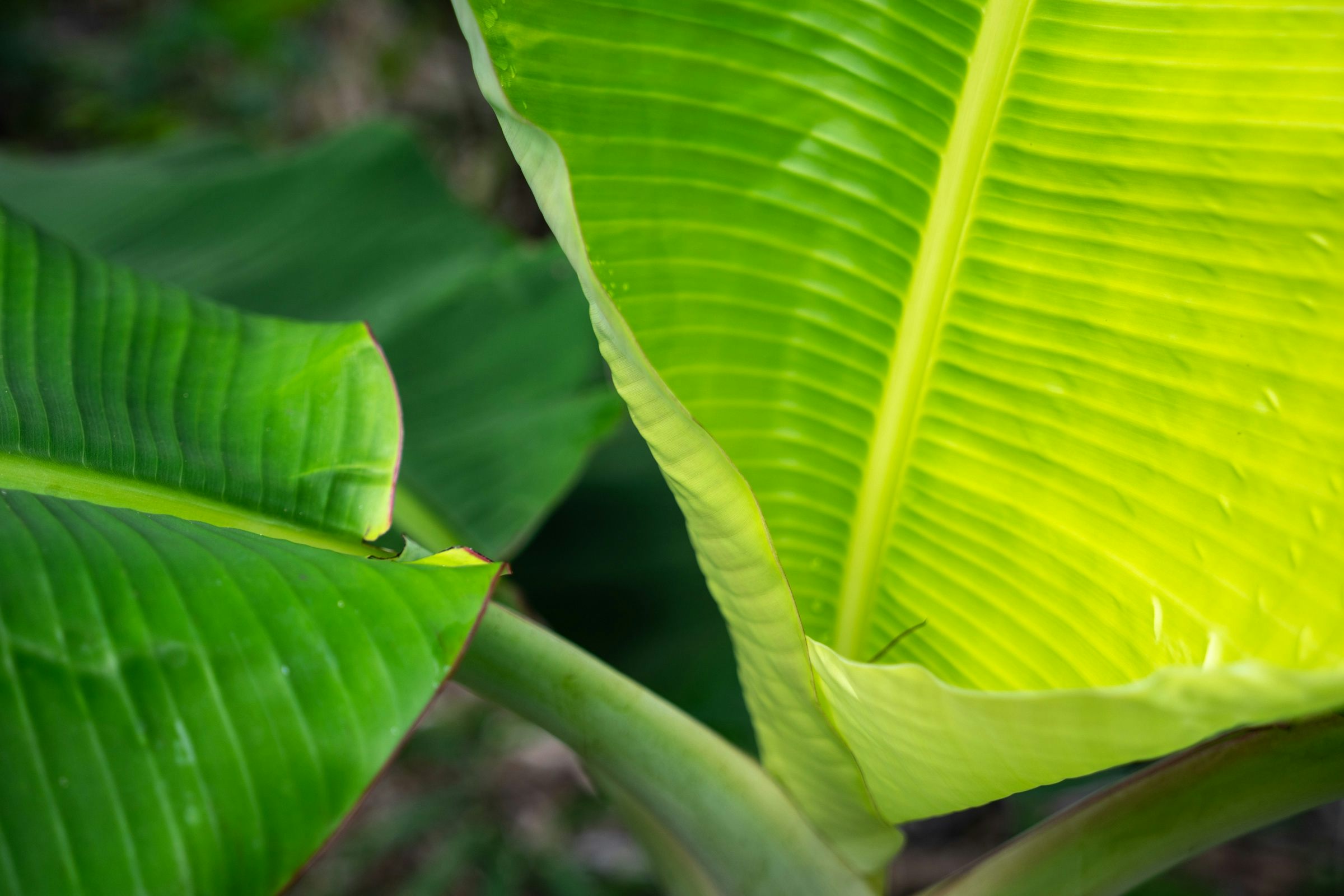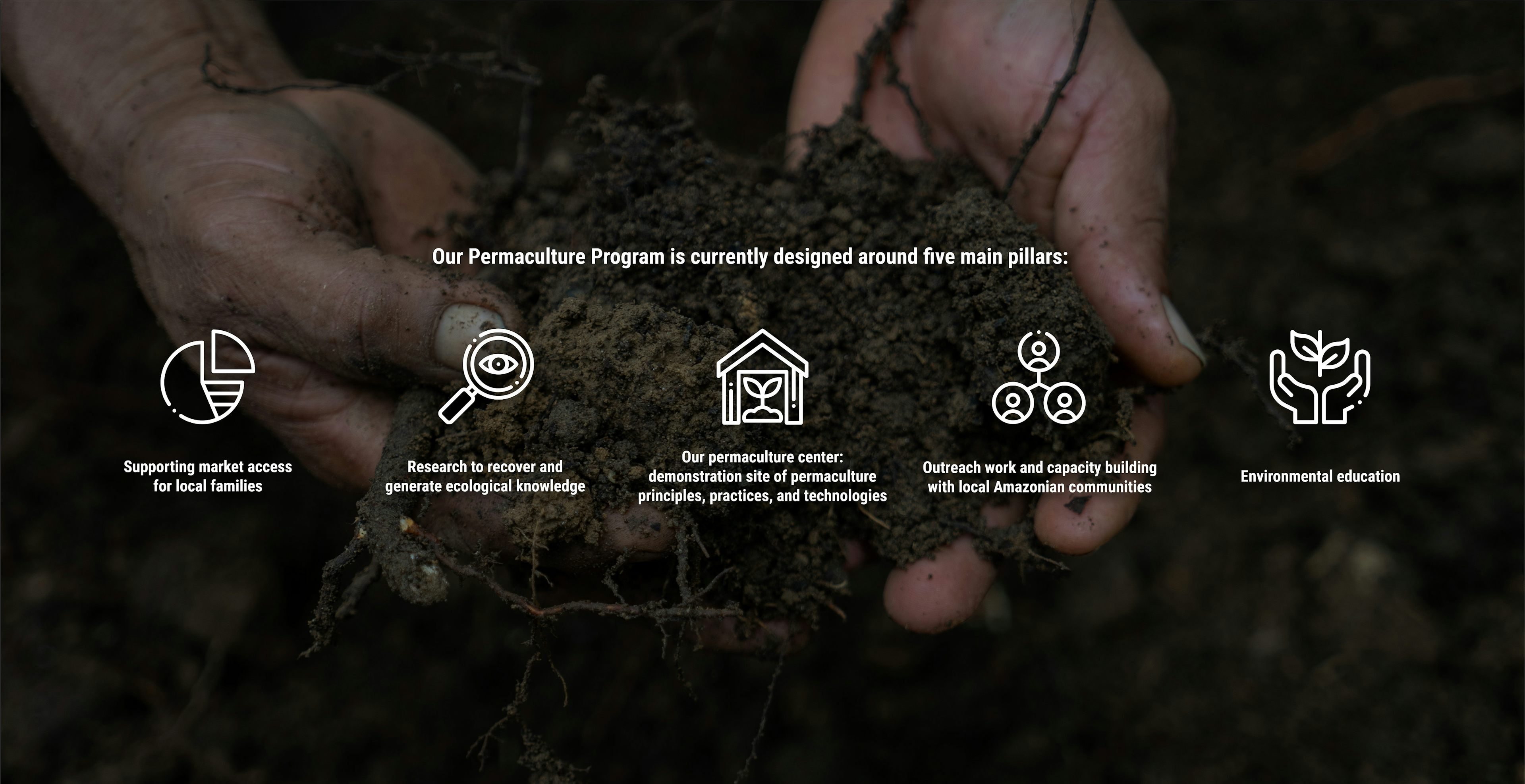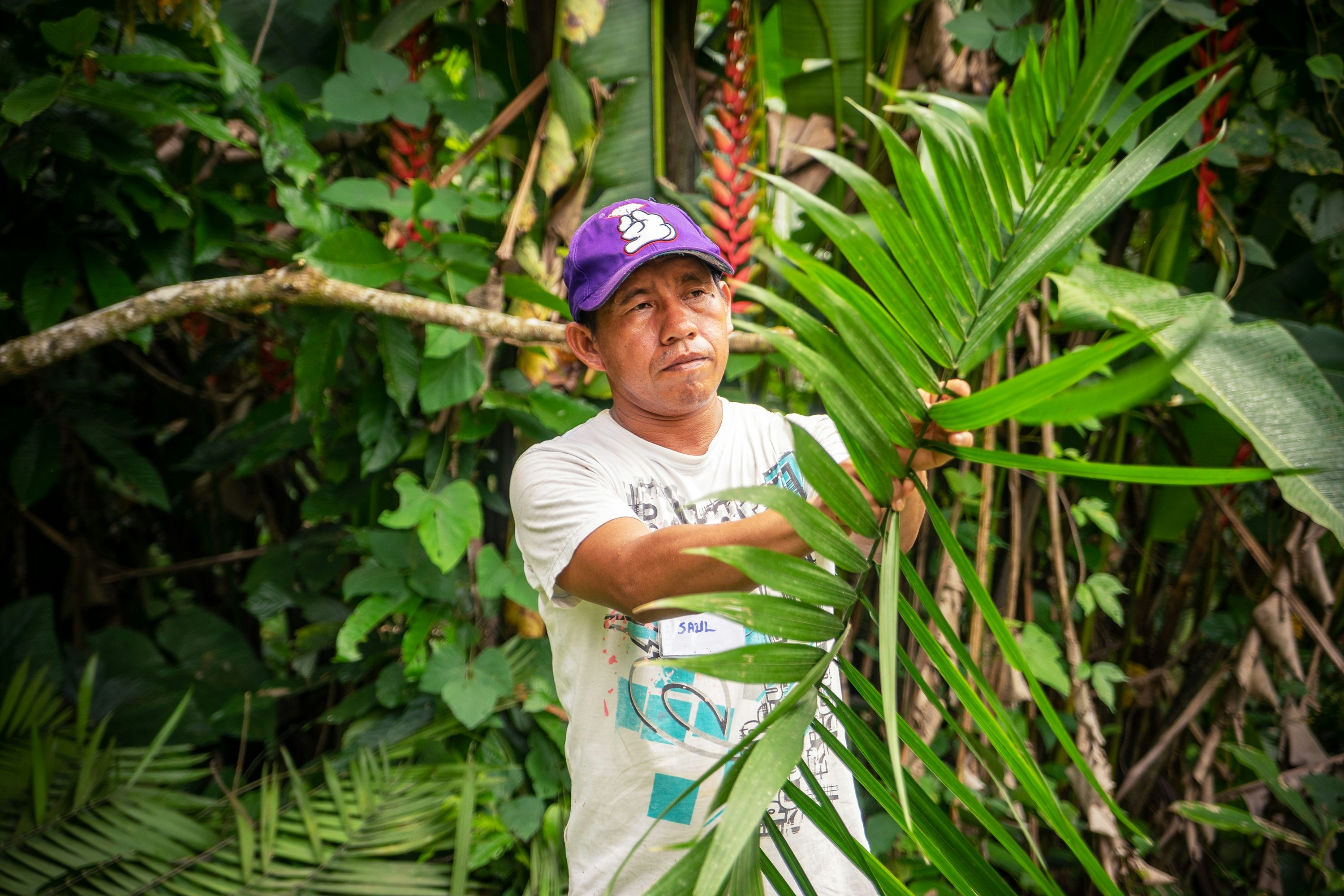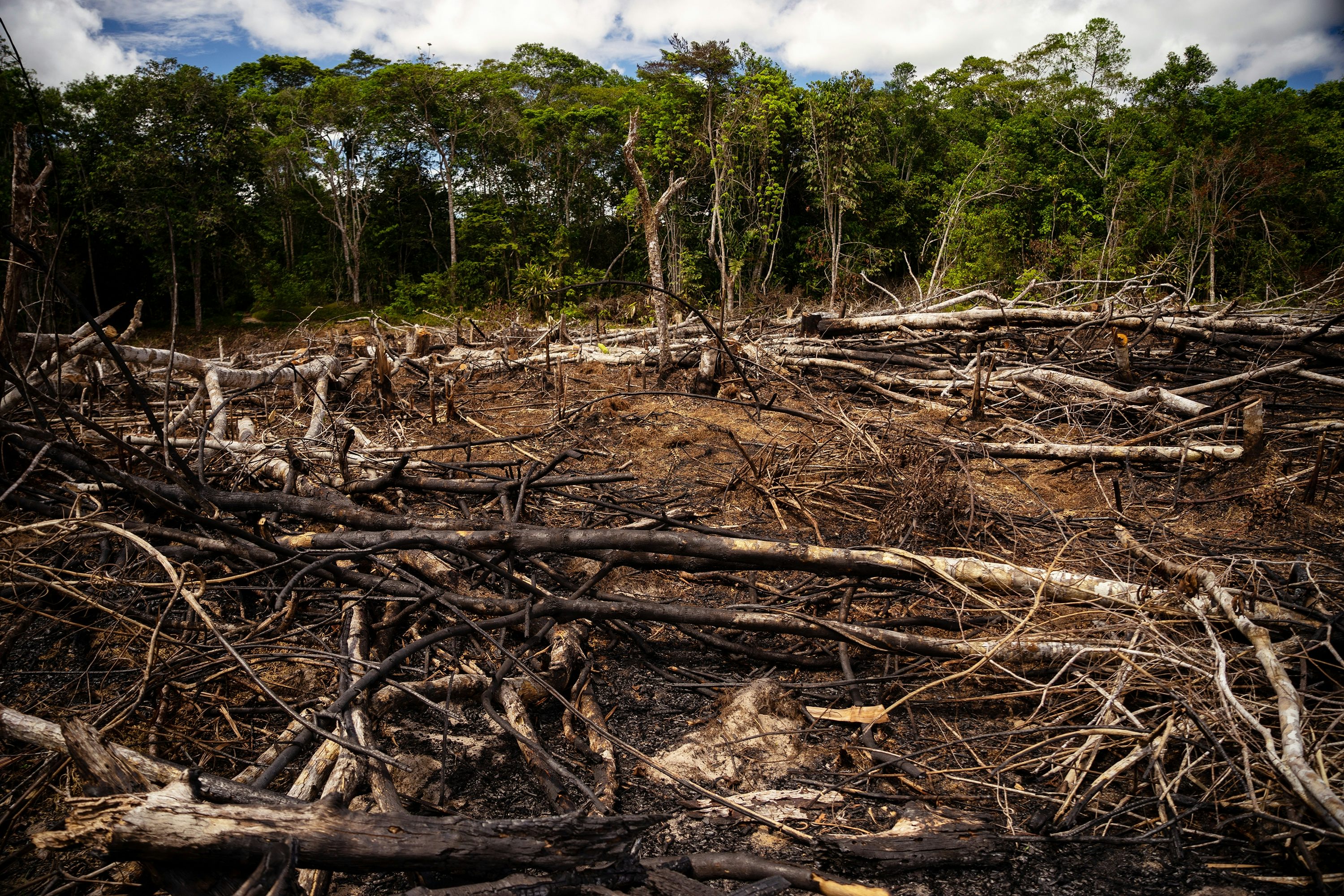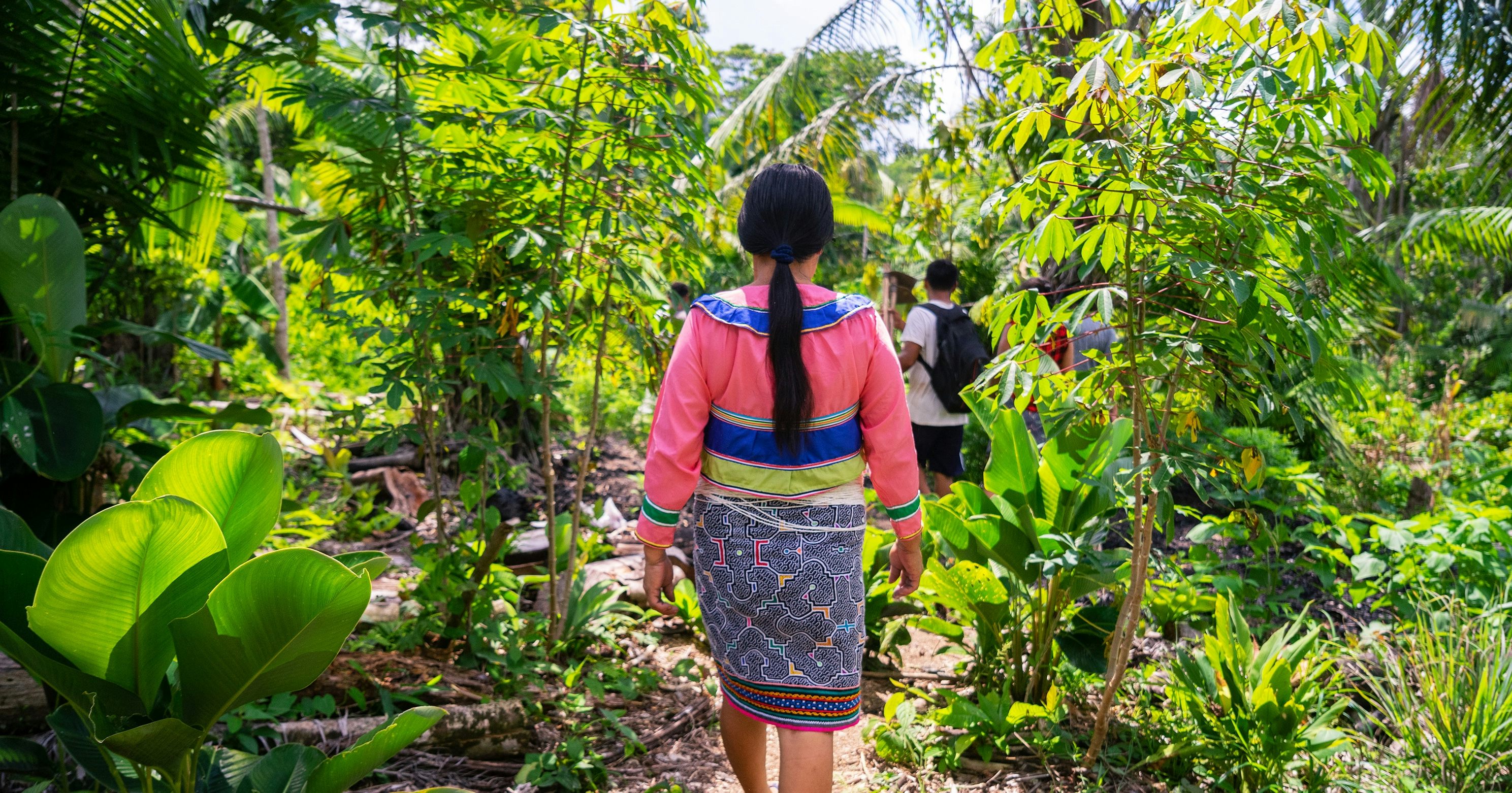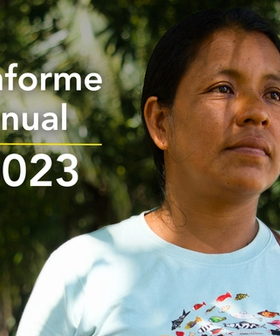Since the mid-20th century and onwards, most farmer and forest communities have adopted slash-and-burn methods that rapidly impoverish the soils and decimate the local environments, while Indigenous forest farming techniques are being increasingly forgotten and lost.
One of Chaikuni's goals is to safeguard, recover and promote these indigenous practices as part of the solutions we so urgently need today to regenerate and save the Amazon ecosystem.
SUPPORT OUR WORK HERE
Regenerating the Amazon working hand in hand with its peoples
We bridge traditional indigenous land-management techniques with modern agroecology methods to develop sustainable, integrated alternatives to land-use. Our main focus has been to promote what we call “chacras integrales”, a non-burning and diverse agroforestry system. As part of this integral system, we also promote and teach the keeping of native stingless bees, valued by communities as a source of medicine and income.
What began as a Permaculture Program today draws its main inspiration and action from Amazonian agroforestry. This not only holds great potential for benefiting communities and ecosystems but also aligns closely with the traditional systems of Indigenous and riverine peoples.

"We learned to grow plants
without destroying the most important
thing, which is the organic matter.
That is, without burning the soil."
Our Permaculture Program is currently designed around five main pillars; our permaculture center (demonstration site of permaculture principles, practices and technologies), research work to recover and generate ecological knowledge, outreach work and capacity building with local Amazonian communities, supporting market access for local families and environmental education.
Between 2019 and 2023:
- Over 150 people (indigenous leaders, women, students, and local farmers) received training in regenerative agroforestry.
- 23 indigenous individuals (women, students, and community leaders) were trained as agroforestry and native bee-keeping promoters in their communities.
- We supported 68 families to enhance and diversify their traditional family plots, installing approximately 43 hectares of non-burning agroforestry systems.
- We worked in 09 Amazonian communities, including 4 indigenous Kukama communities and 1 indigenous Shawi community.
Currently, under the leadership of the Kukama women of the Huaynakana organization, we provide regular technical assistance to over 20 families on the Marañón river, and 12 in the Nanay river basin. We also advise 05 indigenous organizations on regenerative agroforestry.
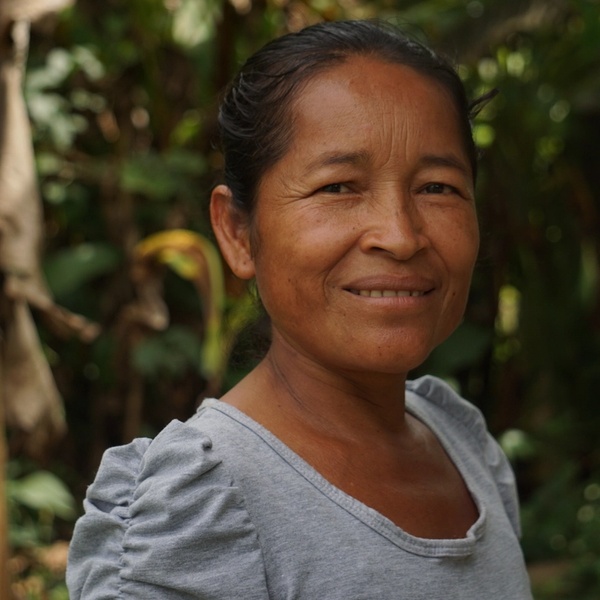
"I would have liked to learn when I was younger, but I am not yet so old. There’s still time […] Someday my grandchildren will harvest and be able to say 'this was planted by my grandmother'"
Know more about Juanita clicking here
Our long term vision is to empower local communities to shift to or find a way back to more sustainable, ecological, and financially-sound practices, and to create a movement that regenerates the Amazon.
The Challenge
In the face of destructive extractive industries and the widespread use of slash-and-burn monocultural agriculture models in our Amazonian region, we seek to inspire people, both locals and visitors, to (re)discover more diverse, sustainable, and regenerative ways of living with our forest environment. Inspired people become agents of change in order to rescue and preserve endangered ancestral, agricultural, and cultural knowledge, and preserve the unique Amazon ecosystem.
Ancestral models of sustainable and diversified agricultural production and cultivation, such as the chacra integral model that we promote at the Chaikuni Institute, proliferated all over pre-conquest South America. With the arrival of European colonizers and traders, production methods shifted from local sustenance-based models towards the massive shipping of goods continentally and globally, and this knowledge was progressively lost in favor of the increasing implementation of monocultures, which reached its peak in the mid-20th century. Today, the problem has been exacerbated due to the acute demand of produce coming from the big cities, both locally and globally.
From the mid-20th century onwards, most farmer and forest communities have adopted slash-and-burn methods that rapidly impoverish the soils and decimate the local environments.
Chacra Integral
Closely linked to the “buen-vivir” worldview, a chacra integral, sometimes referred to as chacras indígenas or chacras tradicionales, translates into a production system that allows an extended family of farmers to cover a wide range of vital needs. Needs such as food, employment, income, medicine, shelter, company and craft-making, that also allow farmers to be stewards and protectors of their environment. This is achieved through a highly diversified and high-yielding system of intertwined agricultural, forestry, and livestock-related activities, which in turn provide refuse that is used as food for livestock and fish farms, and as raw materials for the production of arts and crafts. Since different crops bear fruit during different times of the year, such a system allows the chacra to maximize production by yielding a variety of harvests all year long, boosting food sovereignty and making local families more resilient to market fluctuations.
By not burning the cut vegetation but leaving it on the ground, the chacra integral system regenerates rather than impoverishes soils. By doing so, a chacra integral also avoids further deforestation, since it is no longer necessary to clear a new piece of forest in search of new nutrients every couple of years, as is the case with slash-and-burn agriculture, the largely predominant model used in our amazon region today.
According to Chaikuni's Forest Engineer and permaculture coordinator Silvia del Aguila Reyna, the dangers of extensive monoculture and slash-and-burn style chacras were presented through workshops and other interventions to local rural communities in the Loreto region as early as during the 1980s. Despite this, there have been little to no practical incentives or support since to help farmers transition into a more sustainable practice. These days, the practice of chacras integrales has almost disappeared from the Peruvian rural landscape, and indigenous forest farming techniques are being increasingly forgotten and lost. However, diverse groups such as the Kandoshi people along the Pastaza river or some Achuar and Kichwa communities in the upper Huasaga river, have shifted away from slash-and-burn monocultures and back to their ancestral practices.
One of Chaikuni's goals is to safeguard, recover and promote these indigenous forest farming practices, as part of the solutions we so urgently need today to regenerate and save the Amazon ecosystem.
Fusing indigenous wisdom and modern knowledge to regenerate the Amazon
Since our inception in 2012, our Permaculture Program has been recovering and investigating healthy and regenerative ways to interact with our environment. We bridge traditional indigenous land-management techniques with modern permaculture methods, to develop sustainable living and regenerative land use alternatives.
Sustainable farming in the rainforest
Following a visit to our permaculture center in July 2019, the German international broadcaster, Deutsche Welle (DW), releases a video report on our regenerative agroforestry work. The video is translated into three languages and shown to millions of viewers worldwide, in particular in Latin America.

